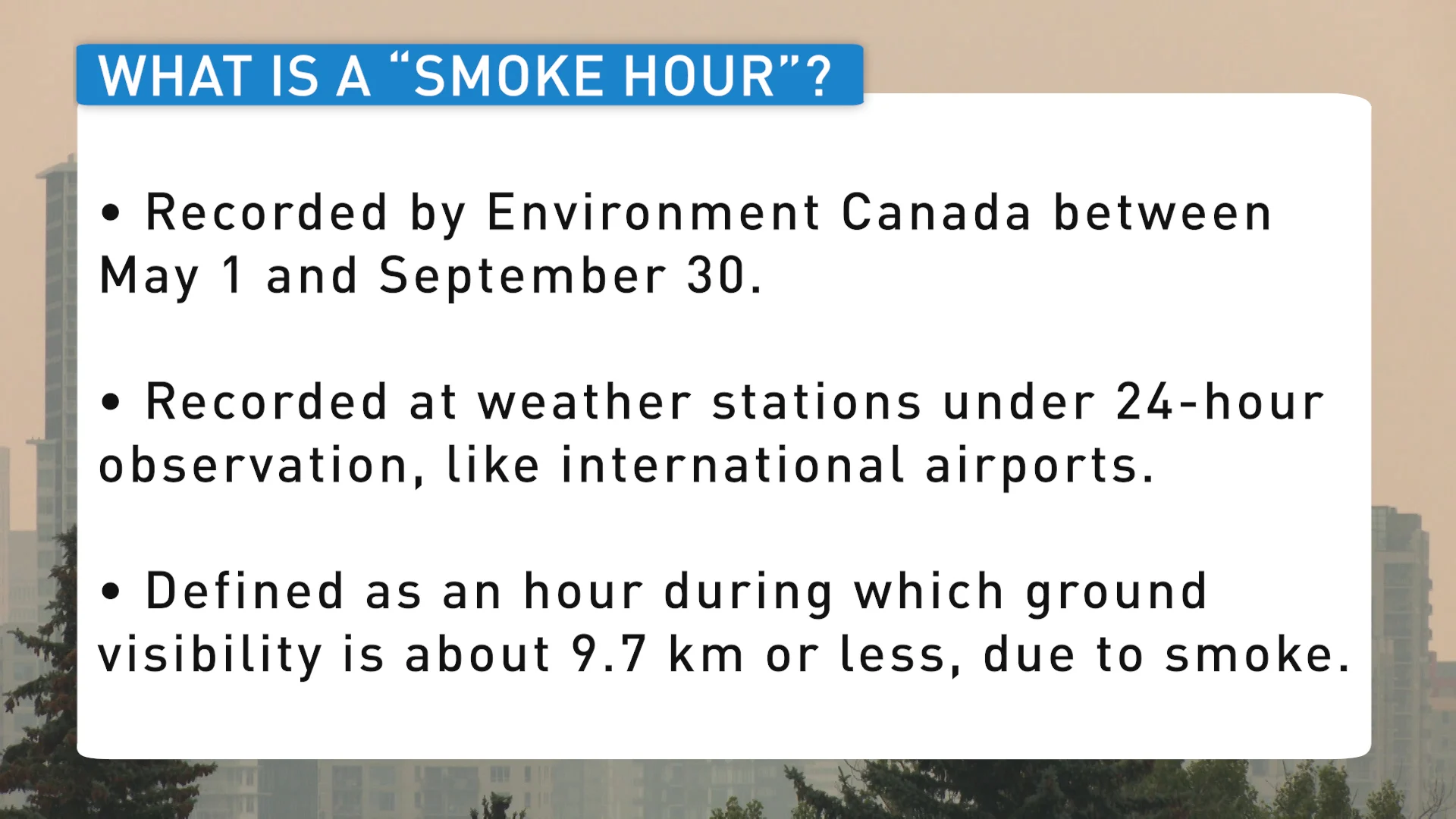
Alberta clocks more 'smoke hours' than ever before
It's already been the smokiest summer on record for Alberta, but as wildfires continue to burn, these records are expected to rise leaving more Albertans shrouded in smoke
Visit The Weather Network's wildfire hub to keep up with the latest on the unprecedented wildfire season across Canada.
The 2023 wildfire season continues to break records in Alberta.
More area has burned this year in the province than ever before.
Now, multiple Alberta cities have experienced more "smoke hours" this year since record-keeping began.

According to Environment and Climate Change Canada (ECCC), from May 1 through September 5, Edmonton had experienced 299 smoke hours, while Calgary had experienced 499.
MUST SEE: Best practices to keep yourself safe from wildfire smoke
With fires still burning near and far, these records are likely to further surpass the 226 and 450 smoke hours recorded in Edmonton and Calgary in 2018.
Cold Lake and Grande Prairie also set new records this year, with 523 and 625 smoke hours respectively, so far. Peace River, meanwhile, has recorded a whopping 644 -- meaning its residents have spent over 20 per cent of that time shrouded in smoke.
SEE ALSO: As haze lingers, Edmonton and Calgary break records for summer smoke
But how exactly is this metric defined, and what relation does it have to air quality?
ECCC defines smoke hours as an hour in which visibility is equal to 9.7 km or less due to smoke, as measured by observers at weather stations under 24/7 monitoring, such as at international airports.

The exact date ECCC began tracking this data varies depending on location, but it has been tracking smoke hours at all the cities mentioned above for at least 60 years.
"It’s a way to track the severity of wildfire season, at least how it’s affecting a particular area," notes ECCC Meteorologist Justin Shelley.
"When we’re talking about places in Alberta, when we have these higher periods of smoke hours, that doesn’t necessarily reflect specifically for Alberta wildfires because we get smoke from areas like B.C., the Northwest Territories as well as the Pacific Northwest, and even from the east."
While the metric isn't directly tied to measurements like the Air Quality Health Index, one researcher says it definitely shouldn’t be ignored.
"We still have a lot of unknowns with regards to the long-term impacts of wildfire-related air pollution," says Yellowknife-based ER physician Dr. Courtney Howard. "But when we look at broader air pollution research, we do know that increasing air pollution is associated with all sorts of bad things, including stroke, heart attack, lung cancer, etcetera."
Howard studied the so-called "Summer of Smoke" in Yellowknife in 2014, which saw 476 smoke hours, and found that pneumonia-related ER visits increased by half, and asthma-related visits doubled during that time.
She says it will be important for community and healthcare leaders to study the impacts of this wildfire season, to help determine how to better keep people safe and healthy in smoky years ahead — especially with a warming world likely to increase the frequency of severe wildfire seasons.
"We need to anticipate increasing costs related to adaptation, and transition to a low-carbon economy,” she says. "It’s really, really time for us to crunch the numbers and do what’s right for public health."
WATCH: Tips to help protect yourself from wildfire smoke
Among Howard's ideas for adaptation, is having municipalities include an air quality-related trigger in their emergency plans where clean air spaces like recreational centres open for free.
"That’s going to be expensive in terms of what we’ll pay for recreation over the summer," says Howard. "But if you compare that to an entire population not getting exercise and getting depressed, I think what we’ll end up finding is that it will not be a large net expenditure, but will end up saving us money most likely in terms of preventing some of the health outcomes we will see."











